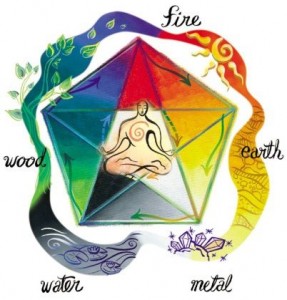 A client and I were talking last week about the “hazards” of having too much storage space. If there is room to store items you may or may not use in the future, the decision to keep or discard can be postponed. For some of us, those decisions have been postponed for 20 years!
A client and I were talking last week about the “hazards” of having too much storage space. If there is room to store items you may or may not use in the future, the decision to keep or discard can be postponed. For some of us, those decisions have been postponed for 20 years!
Before I became a professional organizer, I didn’t fully understand the downside of keeping items I didn’t use or love. I thought that if the house looked nice and I could find what I needed quickly, everything was copacetic. I now know that excess can often create fatigue, shame and embarrassment as well as a lack of focus and clarity.
Here’s where I got in trouble: when I decided to remove an item from my living space and the thought of getting rid of it pulled at my heartstrings, down to the basement it went. Why decide now? There’s plenty of room in the basement! My logic was:
See anything wrong with that thinking? I now have a basement full of stuff (neatly stacked and labeled, of course) that I rarely use. My new logic is:
As I’m learning to let go of anything that doesn’t make my life work better, I’m starting to de-clutter my basement. While I don’t have chunks of time to work on it, I spend an extra five or ten minutes in the basement while doing the laundry and make sure I toss or donate items every single week. In time I’ll get through it all.
I look forward to feeling freer and lighter as I let go of what I don’t use and love.
 February is the shortest month of the year, but it can also be the most depressing. It’s cold outside, often gloomy, and really…who wants to get out of bed?!
February is the shortest month of the year, but it can also be the most depressing. It’s cold outside, often gloomy, and really…who wants to get out of bed?!
It’s clear that a psychological tie connects people to the items that they hoard within their home. Some people develop hoarding tendencies after experiencing a stressful life event that they had difficulty coping with, such as the death of a loved one, divorce, eviction or losing their possessions in a fire, according to The Mayo Clinic. However, the psychology behind your home lies in how you choose to treat it with color. Read below to see how colors can affect us both physically and mentally (via Squidoo.com):
Red – Increases enthusiasm, stimulates energy and action, and encourages confidence
Orange – Stimulates activity and appetite, and encourages socialization
Yellow – Mentally stimulating, activates the memory, and encourages communication
Green – Soothing, mentally and physically relaxing, and helps alleviate depression
Blue – Calming and sedate, cooling, and aids in intuition
Purple – Uplifting, calming to the mind and nerves, and encourages creativity
Brown – Stability, a connection with the earth, and offers a sense of orderliness
White – aids mental clarity, encourages us to clear clutter, and enables fresh beginnings
Gray – Unsettling and expectant
Black – Restful emptiness and mysterious, evoking a sense of potential and possibility
So, how do your favorite colors stack up? What colors are your rooms painted currently? Let the colors be your guide to create an environment that suits your wants and needs. Once you create the environment that you want, you may gain some new motivation to get organized. You don’t need to totally redo your house to emit the same feelings; you can just use and/or reuse accent pieces from other areas in your home, like these:
Soft furnishings – Pillows and throws can add a great pop of color and keep you warm and cozy in the cold weather.
Lighting – Try some new lampshades or just switch out the light bulbs. Soft white bulbs emit a warm yellow-toned light, while daylight bulbs like GE reveal® emit a more natural looking blue-toned light. Hence, the color on your walls can be affected by whichever type of light bulb that you choose.
Artwork and Picture Frames – Find inexpensive prints from places like IKEA and even less expensive pictures, from your camera! Put them into colorful frames or if you can’t find one of the right colors, consider spray painting a basic one!
Books – Head to a thrift shop to look for old hardcover books. Peek under the flaps to see what color the cover is. Pull together a grouping of books based on the colors you are looking for, it doesn’t matter what the subject matter is! Organize some flat and some standing for variety on a bookshelf.
Candles – These come in a variety of colors, give off a pleasant scent and a bit of warmth on cold days!
As for me, my home is painted in blues, browns with white trim and I accessorize with those colors as well. The blue offers me calmness, while the brown offers me a sense of orderliness and finally white encourages me to clear the clutter. Pretty right-on for an organizer, huh?!
 Endless Tasks….Overwhelming Pressure….Desire for Results….Knowing there has to be a better way…
Endless Tasks….Overwhelming Pressure….Desire for Results….Knowing there has to be a better way…
Escaping to Waldon Pond or traveling the country via RV are definitely options – but for most of us not viable ones. Minor adjustments that cumulate for noticeable change are much more desirable. A few time control techniques I’ve come to count on include:
Minimize Thrashing – Thrashing is the computer science term for when a system spends more time switching from task to task then actually working on the task. When we spend our time thinking about what we have to do, remembering where we were in the project, and then building up momentum to get results we are thrashing. Nothing is more frustrating than getting to the meat of a project and then having to stop. I have found the best way to minimize thrashing is to plan substantial chunks of time for a project. I’ll arrange my schedule to be able to commit 2 or 3 CONTINUOUS hours to the task. While it may be hard to find those uninterruptable hours it sure is worth it when the projects done!
Batching – Grouping small relatable tasks together to create an economy of scale yields tangible results as well. Large operations do it all the time – think of production lines, or accounts payable departments. I liken this to stopping for gas when the tank is 3/4 full. It’s just unnecessary. Waiting until you have an 1/8 of a tank or even when the empty light comes on (gasp) is more efficient. Batching work related tasks is more efficient too. Here are tasks I like to batch:
Be Ruthless – Saying NO to things that aren’t critical opens up space for the most important things. Sometimes getting frustrated is the best thing I can do for myself. I look at the mail and just throw all the stuff I didn’t ask for right into the big recycling can. I look at my email and delete things that just don’t matter. I go through my inbox and pull out the work that has to be done and ditch the rest. I find people are truly most effective when they remove what isn’t so important – and sometimes the only way to make a big enough impact is to be ruthless. Where can you be ruthless this week?
Try these techniques and see if things are just a bit easier. I bet you’ll say YES!
We buried Tiger on Saturday. When you have a very old pet, you hope they will give you a sign, letting you know that “it’s time.” And then, when they do, you don’t want to believe it. Tiger was 21 — really old for a cat — and we are grateful for every year we had with this wonderful, loving, dignified friend.
A few months ago, I wrote about how we had modified our home in order to help Tiger age in place. (Helping Tiger Age in Place). Since Saturday, I’ve been thinking about how Bill and I became Tiger’s caregivers as he became increasingly frail. Although the tasks were sometimes unpleasant, we did them without disgust or resentment. I was in charge of litter duty. During his last year of life, Tiger drank huge quantities of water because his kidneys were failing and routinely urinated outside the litter box, even though we had lowered two sides so he could step in more easily. I also cleaned Tiger when he fell into the litter because his hind legs could no longer support him as he squatted. I am not surprised that Bill was a wonderful caregiver; nurturing is second nature to him. But I am a let-me-cross-things-off-my-list kind of person, not a let-me-help-you kind of person. I am worried about my ability to provide the kind of assistance a love one may need some day.
Yes, I prepared my mother-in-law’s medications each week and took care of my mother’s medical bills, but these were list-type tasks, not the intimate, embarrassing, personal tasks that often accompany caregiving. I’m worried I won’t be good enough, or selfless enough, when the time comes. I know I did it with Tiger, but Tiger was not my husband or my parent.

Next week, we will rescue Jackson, a 12 week old kitten, from a nearby shelter, just as we rescued Tiger 21 years ago. It’s not that we are trying to replace Tiger —Tiger can’t be replaced. It’s that we have experienced the joy of living with pets and know that this is the way we want to live our lives.
But I can’t get a replacement mother or husband a week later. Perhaps it is this permanence that makes caregiving for loved ones so much harder than caregiving for a pet. But who knows. I was a better caregiver than I thought I would be with Tiger, perhaps I will be better than I expect with the people I love as well. I hope so.
Now that the winter holidays are over, we may find ourselves with a few extra baskets on hand – baskets that arrived holding fresh fruit or bath products.
Baskets, while making a lovely presentation containers, often have awkward shapes and can be challenging to store. Sometimes donating them seems preferable to losing storage space to their clumsy designs. And then again, how can we let them go when there may be a use for them…someday?
Before letting your frustration take over, here are a few suggestions of places around your home that can benefit from the strategic placement of some of these vexing vessels:
So, if you’re ready to cram your baskets into cupboards or send them on their way out the door, take a look around your home and ask yourself if there area any areas that could benefit from some clever containment.
A lovely new basket might be just the solution!